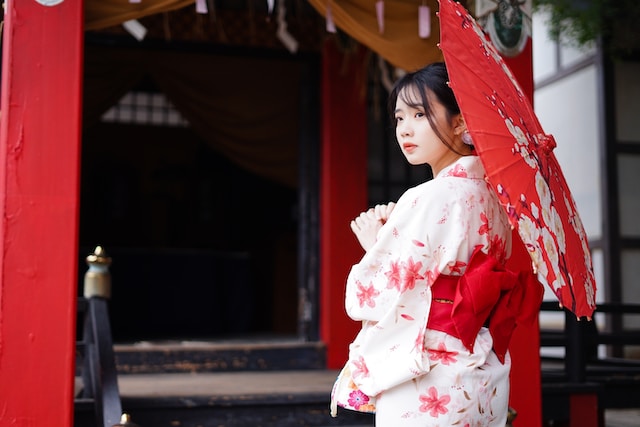


During the Heian period (794-1185), kimonos were worn by aristocrats as noble garments with gorgeous decorations and embroidery. The kimonos of this period were made of brightly colored silk fabrics and dyed fabrics, and women’s kimonos had wide sleeves and a soft shape.
During the Kamakura period (1185-1333), the kimono began to spread as a more practical garment. Farmers and merchants also started wearing kimonos, and simple designs and patterns were used.
During the Muromachi period (1336-1573), kimonos were further simplified, with less patterns and embroidery. During this period, the basic shape of Japanese clothing was established, and the basic design of kimono that continues today was established.
In the Edo period (1603-1868), kimono became popular as everyday wear for the common people, and with the development of Edo culture, various patterns and colors came to be used. During this period, beautiful kimonos influenced by ukiyo-e were created, and kimono culture developed.
During the Meiji period (1868-1912), Western-style clothing began to spread under the influence of Western culture. However, kimonos are still widely loved today and are still worn on special occasions and ceremonies.
A Japanese yukata is a type of traditional Japanese clothing worn during the summer. Below are details about Yukata.
Yukata is made of thin cotton or hemp, and is characterized by good breathability, coolness and comfort. Yukata is made to be easier to put on than kimono, and the obi is easy to tie.
Yukata are often made of fabric with patterns such as flowers and plants, and are characterized by their colorful and beautiful designs. In addition, yukata can be arranged in various ways by matching the obi, just like kimono.
Yukata was originally developed as a garment to be worn at a bathhouse, but nowadays it is popular for events such as summer festivals and fireworks displays, as well as for spending the summer at home. By wearing a yukata, you can enjoy the taste of Japan.

When it comes to how to wear a yukata, men should wear geta (Japanese clogs) or zori (Japanese sandals), and a simple updo or braids will suit them well. For women, adding sandals, clogs, folding fans, and hair ornaments can give a more glamorous impression.

The above is the general flow of the history of Japanese kimono. Kimono is an important part of traditional Japanese culture and is still loved by many people today.